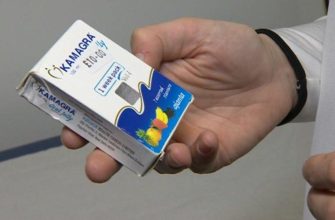If your doctor prescribed Lisinopril 10/12.5 mg tablets, you’re likely managing hypertension. This combination drug merges Lisinopril, an ACE inhibitor, with Hydrochlorothiazide, a diuretic. The blend works synergistically, providing potentially better blood pressure control than using a single medication alone. You’ll want to understand how it functions within your body.
Lisinopril helps relax your blood vessels. It does this by preventing your body from producing angiotensin II, a substance that narrows blood vessels. Think of it like widening a garden hose to reduce pressure. Meanwhile, Hydrochlorothiazide reduces the amount of fluid in your body by increasing urination. This dual action reduces the strain on your heart and arteries. Monitor your blood pressure regularly at home and share those readings with your physician.
Dosage is crucial. You’re on the 10/12.5 mg strength, suggesting a balanced approach to managing your condition. Always follow your doctor’s specific instructions. If you experience persistent coughing (a known side effect of ACE inhibitors), or muscle cramps (potentially linked to Hydrochlorothiazide’s effect on electrolytes), consult your physician promptly. Dietary changes, such as reducing sodium intake and staying adequately hydrated, complement Lisinopril’s effects and can enhance its benefits.
- Lisinopril 10/12.5 mg Tablets: A Complete Overview
- What is Lisinopril/HCTZ?
- Who Should Take Lisinopril 10/12.5?
- How to Take Lisinopril 10/12.5 Correctly?
- Potential Side Effects to Watch For
- Less Common Side Effects
- Important Interactions to Consider
- Drug Interactions to Be Aware Of
- Lisinopril 10/12.5 vs. Other Blood Pressure Meds
- Storing Lisinopril 10/12.5 Safely
- Protect from Light
- When to Contact Your Doctor
Lisinopril 10/12.5 mg Tablets: A Complete Overview
Take Lisinopril 10/12.5 mg tablets once daily, as prescribed, to manage hypertension and, in some cases, heart failure. This combination medication contains lisinopril, an ACE inhibitor that lowers blood pressure, and hydrochlorothiazide, a diuretic that helps the body get rid of excess salt and water.
- Hypertension: The 10/12.5 mg dosage effectively reduces blood pressure, lowering the risk of stroke and heart attack. Monitor your blood pressure regularly and share readings with your doctor.
- Heart Failure: Lisinopril eases the workload on the heart, improving its ability to pump blood. Report any swelling in your ankles or shortness of breath to your healthcare provider.
Be aware of potential side effects. Common ones include dizziness, cough, and lightheadedness. If these persist or worsen, speak with your doctor or pharmacist. Less common, but more serious, side effects include allergic reactions (rash, itching, swelling) and kidney problems. Seek immediate medical attention if you experience these.
Before taking Lisinopril 10/12.5 mg, inform your doctor about all your medications, including over-the-counter drugs and herbal supplements. Certain medications, such as NSAIDs (like ibuprofen or naproxen), can interact with Lisinopril and decrease its efficacy. Also, disclose any existing medical conditions, particularly kidney disease, diabetes, or a history of angioedema.
To maximize the benefits of Lisinopril, adopt healthy lifestyle habits. These include a balanced diet low in sodium, regular physical activity, and maintaining a healthy weight. Limit alcohol consumption, as it can interact with the medication and worsen its side effects. Quit smoking if you smoke. Discuss any dietary changes with your doctor or a registered dietitian.
Store Lisinopril 10/12.5 mg tablets at room temperature, away from moisture and heat. Keep them out of reach of children and pets. Do not store in the bathroom. If you miss a dose, take it as soon as you this, unless it is almost time for your next dose. In that case, skip the missed dose and resume your regular dosing schedule. Do not double the dose to catch up.
Consult your doctor immediately if you become pregnant while taking Lisinopril. This medication can cause serious harm to an unborn baby. If you are planning a pregnancy, discuss alternative treatment options with your healthcare provider.
What is Lisinopril/HCTZ?
Lisinopril/HCTZ is a combination medication that doctors prescribe primarily to manage high blood pressure (hypertension). It blends two active ingredients: lisinopril and hydrochlorothiazide (HCTZ).
Lisinopril belongs to a class of drugs called angiotensin-converting enzyme (ACE) inhibitors. It functions by relaxing blood vessels, which allows blood to flow more freely, thereby lowering blood pressure. You can think of it as widening the pipes to reduce pressure.
Hydrochlorothiazide is a diuretic, sometimes referred to as a “water pill.” It aids your body in eliminating excess salt and water, which also lowers blood pressure. It does this by increasing urination.
Physicians often prescribe Lisinopril/HCTZ when a single medication is not adequately controlling a patient’s blood pressure. Combining these two agents provides a synergistic effect, helping to achieve target blood pressure levels more readily.
Understand that this medication is not suitable for everyone. People with certain medical conditions, such as kidney problems or allergies to sulfa drugs (a component of HCTZ), may need alternative treatments.
Here’s a simple breakdown of what each component does:
| Component | Function |
|---|---|
| Lisinopril | Relaxes blood vessels, lowers blood pressure |
| Hydrochlorothiazide (HCTZ) | Removes excess salt and water, lowers blood pressure |
Always take this medication exactly as your healthcare provider directs. Do not adjust the dose without their consent. They will determine the appropriate dosage based on your individual situation and needs. Be sure to discuss any concerns or side effects with your doctor or pharmacist. Regular monitoring of blood pressure and kidney function is advisable while taking Lisinopril/HCTZ.
Who Should Take Lisinopril 10/12.5?
Consider Lisinopril 10/12.5 if your doctor has diagnosed you with high blood pressure (hypertension) and believes a combination of an ACE inhibitor (Lisinopril) and a diuretic (Hydrochlorothiazide, at 12.5mg) is the appropriate approach for you. This specific combination is often prescribed when Lisinopril alone, at a higher dose, hasn’t sufficiently lowered your blood pressure. It’s a step-up treatment designed to enhance blood pressure control.
You might also be a suitable candidate if you have heart failure. Lisinopril helps manage heart failure by relaxing blood vessels, making it easier for your heart to pump blood. The added diuretic assists in reducing fluid buildup, a common symptom of heart failure that causes shortness of breath and swelling. Ask your doctor if this combination medicine is right for your situation.
However, Lisinopril 10/12.5 is not for everyone. You should not take this medication if you are allergic to Lisinopril, Hydrochlorothiazide, or any other ACE inhibitor or sulfonamide-derived medication. It’s also contraindicated during pregnancy due to the risk of fetal harm. If you have a history of angioedema (swelling of the face, lips, tongue, or throat) related to ACE inhibitors, this medication is not suitable.
Individuals with kidney problems should use Lisinopril 10/12.5 cautiously, as it can affect kidney function. Potassium levels are also a factor; discuss any existing potassium imbalances with your physician before starting this medication. Monitor your blood pressure regularly and report any unusual side effects to your doctor.
How to Take Lisinopril 10/12.5 Correctly?
Swallow your Lisinopril 10/12.5 tablet whole with a full glass of water. You can take it with or without food, but consistency is key. Choose a time of day that works best for you and stick to it.
If you miss a dose, take it as soon as you recall. However, if it’s almost time for your next dose, skip the missed one and resume your regular dosing schedule. Don’t double up to catch up.
Store your Lisinopril 10/12.5 tablets at room temperature, away from moisture and heat. Keep the container tightly closed and out of reach of children.
Regular blood pressure monitoring is vital while taking Lisinopril 10/12.5. Keep appointments with your doctor and get your blood pressure checked regularly.
Be mindful of potential interactions. Before starting Lisinopril 10/12.5, inform your doctor about all other medications you’re taking, including over-the-counter drugs, vitamins, and herbal supplements.
Avoid excessive alcohol consumption while taking Lisinopril 10/12.5, as it can lower your blood pressure further and increase the risk of side effects.
Stay hydrated. Drink plenty of fluids throughout the day, especially if you’re exercising or in hot weather, to avoid dehydration.
If you experience any adverse effects, such as dizziness, persistent cough, or swelling, contact your doctor immediately. Don’t stop taking Lisinopril 10/12.5 without consulting your doctor first, as suddenly stopping medication can be harmful.
Follow your doctor’s instructions carefully. The dosage and duration of treatment will depend on your individual health condition and response to medication. Stick to the prescribed regimen for optimal results.
Potential Side Effects to Watch For
Monitor your blood pressure regularly while taking Lisinopril 10/12.5 mg. Dizziness or lightheadedness, especially when standing up quickly, may occur. Stand up slowly from a sitting or lying position to help prevent this. If dizziness persists, consult your doctor.
A persistent dry cough is a common side effect. If you develop a bothersome cough that doesn’t go away, speak with your healthcare provider about alternative treatment options.
Pay attention to any signs of an allergic reaction, such as rash, itching, swelling (especially of the face, tongue, or throat), severe dizziness, or trouble breathing. Seek immediate medical attention if these symptoms appear.
Be aware of potential kidney problems. Watch for changes in urination, such as decreased urine output. If you notice any changes, contact your physician without delay.
Lisinopril can affect potassium levels in your blood. Muscle weakness, irregular heartbeat, or tingling sensations could signal a potassium imbalance. Report these symptoms to your doctor, who may recommend blood tests.
Less Common Side Effects
- Headache: Manageable with over-the-counter pain relievers, but consult your doctor if severe.
- Fatigue: If persistent, discuss with your healthcare provider.
- Nausea: Try eating smaller, more frequent meals.
Important Interactions to Consider
Certain medications can interact with Lisinopril 10/12.5 mg. Nonsteroidal anti-inflammatory drugs (NSAIDs) like ibuprofen or naproxen can reduce the drug’s blood pressure-lowering effect. Always inform your doctor about all medications, supplements, and herbal remedies you are taking.
Drug Interactions to Be Aware Of
Lisinopril, when combined with certain medications, can significantly alter their effects or increase the risk of side effects. Pay close attention to these potential interactions.
Nonsteroidal anti-inflammatory drugs (NSAIDs) like ibuprofen (Advil, Motrin) and naproxen (Aleve) may reduce lisinopril’s blood pressure-lowering effect. Monitor your blood pressure closely if you take these medications together. They can also increase your risk of kidney problems.
Diuretics (“water pills”) such as hydrochlorothiazide can lower your blood pressure too much when taken with lisinopril. Discuss with your doctor whether your diuretic dosage needs adjusting.
Potassium supplements or salt substitutes containing potassium can raise your potassium levels dangerously high (hyperkalemia) when you are on lisinopril. Avoid these unless specifically recommended by your doctor.
Aliskiren, another type of blood pressure medication, should not be taken with lisinopril, especially if you have diabetes. This combination increases your risk of kidney problems, low blood pressure, and high potassium.
Lithium, used to treat certain psychiatric conditions, can have increased levels in your blood when you take lisinopril. This can lead to lithium toxicity. Your doctor will need to monitor your lithium levels closely.
Gold injections (sodium aurothiomalate), used for rheumatoid arthritis, may cause a rare reaction involving nitritoid reactions (symptoms include flushing, nausea, vomiting, and hypotension) when administered with ACE inhibitors like lisinopril.
Sacubitril/valsartan (Entresto), a medication for heart failure, should not be taken with lisinopril. Wait at least 36 hours after your last dose of lisinopril before starting sacubitril/valsartan, and vice versa, to avoid severe angioedema (swelling).
Always inform your doctor and pharmacist about all medications you are taking, including prescription, over-the-counter, and herbal supplements, to identify potential drug interactions and ensure your safety.
Lisinopril 10/12.5 vs. Other Blood Pressure Meds
Consider Lisinopril 10/12.5 primarily if you need both an ACE inhibitor and a low-dose diuretic. It’s a cost-effective initial choice, but explore other options if you experience persistent cough, a common side effect of ACE inhibitors like Lisinopril.
Compared to Beta-blockers, Lisinopril 10/12.5 offers a better profile for active individuals as it typically doesn’t cause fatigue. However, if you also have anxiety or migraines, beta-blockers may provide additional benefits.
If you have diabetes and high blood pressure, Lisinopril 10/12.5 provides renal protection benefits due to its ACE inhibiting action. Calcium channel blockers like Amlodipine are also suitable, but they don’t offer the same kidney benefits as ACE inhibitors.
Lisinopril 10/12.5 is generally less likely to cause drowsiness than some other blood pressure medications, such as certain diuretics or alpha-blockers. This makes it a suitable choice if you need to maintain alertness throughout the day.
Think about taking ARBs like Losartan if you can’t tolerate the cough from Lisinopril. ARBs offer a similar mechanism of action in lowering blood pressure but with a lower incidence of cough. Discuss this with your doctor.
Consult your physician about combining Lisinopril 10/12.5 with lifestyle changes like diet and exercise. Lifestyle adjustments amplify the effects of medication and may allow for a lower drug dosage, potentially minimizing side effects.
Avoid using NSAIDs (e.g., ibuprofen, naproxen) regularly while on Lisinopril 10/12.5. They can reduce the blood pressure lowering effect and may increase the risk of kidney problems. Always inform your doctor about all the medications you are taking.
Monitor your potassium levels while taking Lisinopril 10/12.5. This combination can sometimes increase potassium. Potassium levels can be tested at your regular checkups with your doctor. Be mindful of foods high in potassium, and consult with your doctor regarding your specific diet.
Storing Lisinopril 10/12.5 Safely
Keep your Lisinopril 10/12.5 tablets at room temperature, ideally between 68°F to 77°F (20°C to 25°C). Avoid storing them in areas prone to temperature fluctuations, such as bathrooms or near windows.
Protect your medication from moisture. Humidity can degrade the tablets, potentially affecting their potency. Store them in a dry place and keep the container tightly closed.
Protect from Light
Shield your Lisinopril from direct sunlight and bright light. Light exposure can break down the medication. Store the tablets in their original container, which is designed to block light. A cupboard or drawer is suitable.
Ensure the medication is out of reach of children and pets. Accidental ingestion can be dangerous. Store the medication in a secure location where children and pets cannot access it. Consider a locked medicine cabinet if necessary.
Check the expiration date printed on the packaging. Do not use Lisinopril 10/12.5 after this date. Expired medication may be less effective or even harmful. Dispose of unused or expired medication safely. Contact your pharmacist for guidance on proper disposal methods; many pharmacies offer medication take-back programs.
If your Lisinopril tablets change in appearance, such as color or texture, consult your pharmacist before taking them. This could be a sign that the medication has degraded. Your health is paramount; seek professional guidance.
Traveling with Lisinopril 10/12.5? Keep it in your carry-on luggage to avoid temperature extremes and potential loss. Ensure the medication is clearly labeled. Carry a copy of your prescription, especially when traveling internationally. This can help avoid any issues with customs or security.
When to Contact Your Doctor
Immediately contact your doctor if you experience swelling of your face, tongue, or throat after taking Lisinopril 10/12.5 mg. This could indicate a serious allergic reaction requiring immediate attention. Also, report any difficulty breathing or swallowing.
Inform your doctor if you become pregnant or plan to become pregnant while taking this medication. Lisinopril can harm a developing baby.
Let your doctor know if you develop persistent dry cough that interferes with your daily life. Although cough is a known side effect, its severity might necessitate dosage adjustment or alternative treatment.
Contact your doctor if you experience significant dizziness or lightheadedness, especially upon standing. This might indicate your blood pressure is dropping too low, requiring medication adjustment.
Report muscle weakness, cramps, or irregular heartbeat to your physician. These symptoms may suggest an electrolyte imbalance requiring immediate assessment and management.
If you notice changes in urination habits, such as decreased urine output or swelling in your ankles and feet, contact your healthcare provider. These symptoms could suggest kidney problems and warrant investigation.
Finally, if you develop any new or worsening symptoms that concern you, don’t hesitate to reach out to your doctor. It’s always better to err on the side of caution when it comes to your health.






